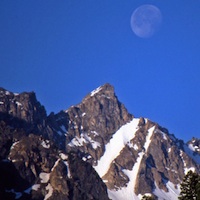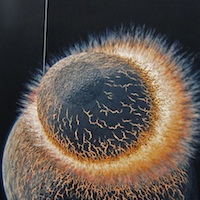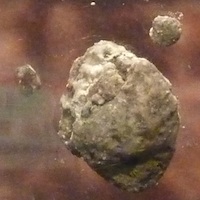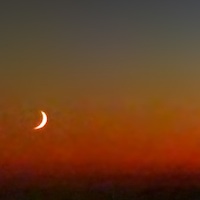| The Moon | ||
|
|
| The Moon
is the tiny twin planet that orbits the sun
along with the Earth.
The leading theory explaining where our moon came from suggests that a small planet smacked into the Earth about 4.5 billion years ago, and this created a cloud of debris around the Earth. The cloud of debris formed a ring, and then the ring
condensed into a moon. Mitsunobu Tatsumoto and John N. Rosholt have suggested an age of about 4.66 billion years for the moon, based upon isotopic studies of some elements found in moon dust samples brought back to Earth by the Apollo 11 expedition.
Lee, Halliday, Snyder, and Taylor have suggested that such dates need to be modified to account for behavior of some of those isotopes, and so they suggest the moon may be closer to 4.52 to 4.50 billion years old.
|
  |
|
Links about the moon:
|
  |
|
| Back to the Geophysical Timeline: Earth, Sun, Rodinia, Proterozoic, Plate Tectonics, Phanerozoic, Paleozoic, Ordovician, Neutron, Milky Way, Hadean, Galaxy, Fossils, Cryogenian, Continental Shields, Big Bang, Archean. | ||
|
Back to the Biological Timeline: terrestrial animals, trilobite, prokaryote, oxygen catastrophe, Metazoa, eukaryote. |
||
|
Back to the World History Timeline in English |
||
| Back to the Historylines home page. | ||
|